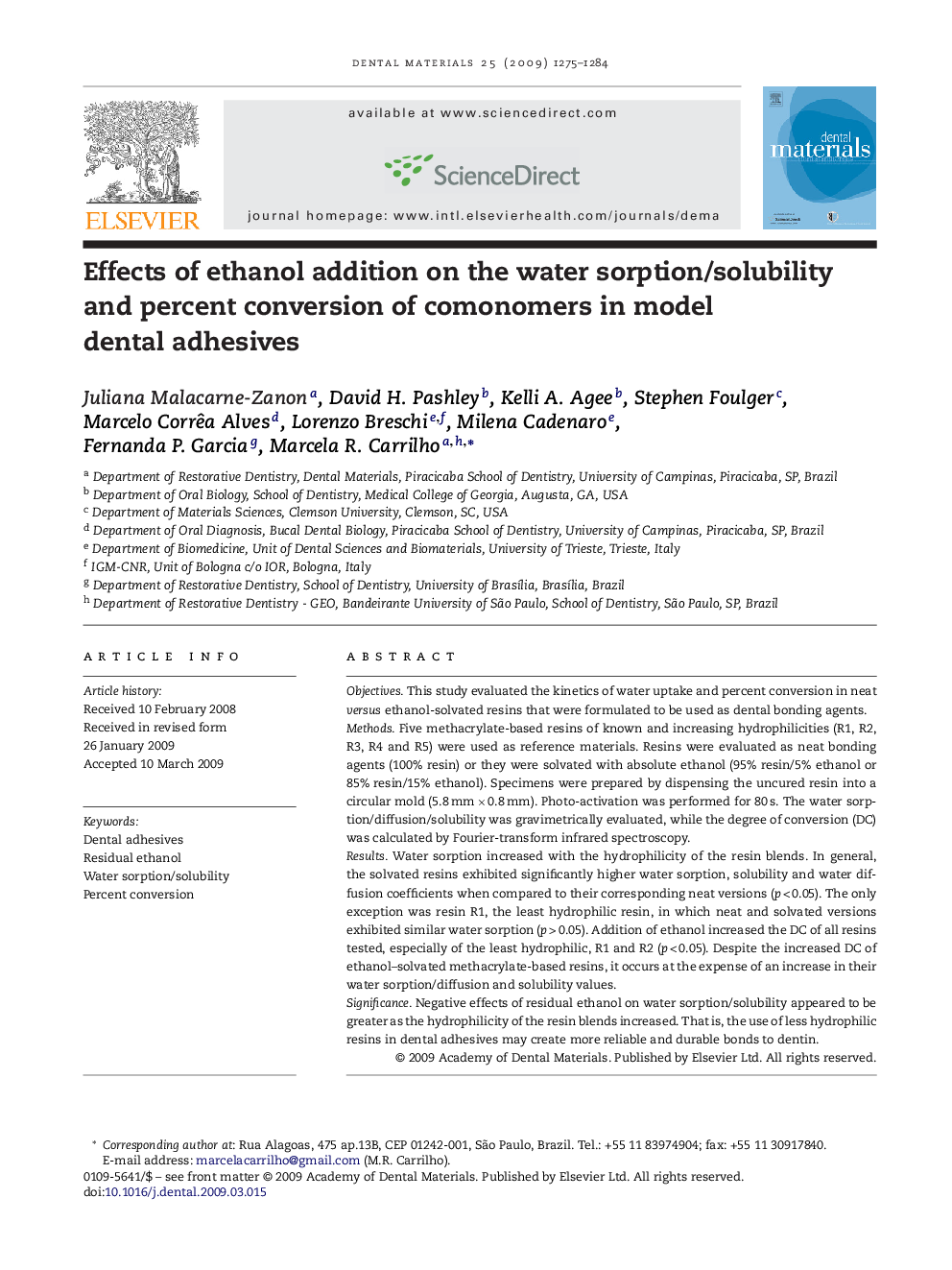| Article ID | Journal | Published Year | Pages | File Type |
|---|---|---|---|---|
| 1422490 | Dental Materials | 2009 | 10 Pages |
ObjectivesThis study evaluated the kinetics of water uptake and percent conversion in neat versus ethanol-solvated resins that were formulated to be used as dental bonding agents.MethodsFive methacrylate-based resins of known and increasing hydrophilicities (R1, R2, R3, R4 and R5) were used as reference materials. Resins were evaluated as neat bonding agents (100% resin) or they were solvated with absolute ethanol (95% resin/5% ethanol or 85% resin/15% ethanol). Specimens were prepared by dispensing the uncured resin into a circular mold (5.8 mm × 0.8 mm). Photo-activation was performed for 80 s. The water sorption/diffusion/solubility was gravimetrically evaluated, while the degree of conversion (DC) was calculated by Fourier-transform infrared spectroscopy.ResultsWater sorption increased with the hydrophilicity of the resin blends. In general, the solvated resins exhibited significantly higher water sorption, solubility and water diffusion coefficients when compared to their corresponding neat versions (p < 0.05). The only exception was resin R1, the least hydrophilic resin, in which neat and solvated versions exhibited similar water sorption (p > 0.05). Addition of ethanol increased the DC of all resins tested, especially of the least hydrophilic, R1 and R2 (p < 0.05). Despite the increased DC of ethanol–solvated methacrylate-based resins, it occurs at the expense of an increase in their water sorption/diffusion and solubility values.SignificanceNegative effects of residual ethanol on water sorption/solubility appeared to be greater as the hydrophilicity of the resin blends increased. That is, the use of less hydrophilic resins in dental adhesives may create more reliable and durable bonds to dentin.
